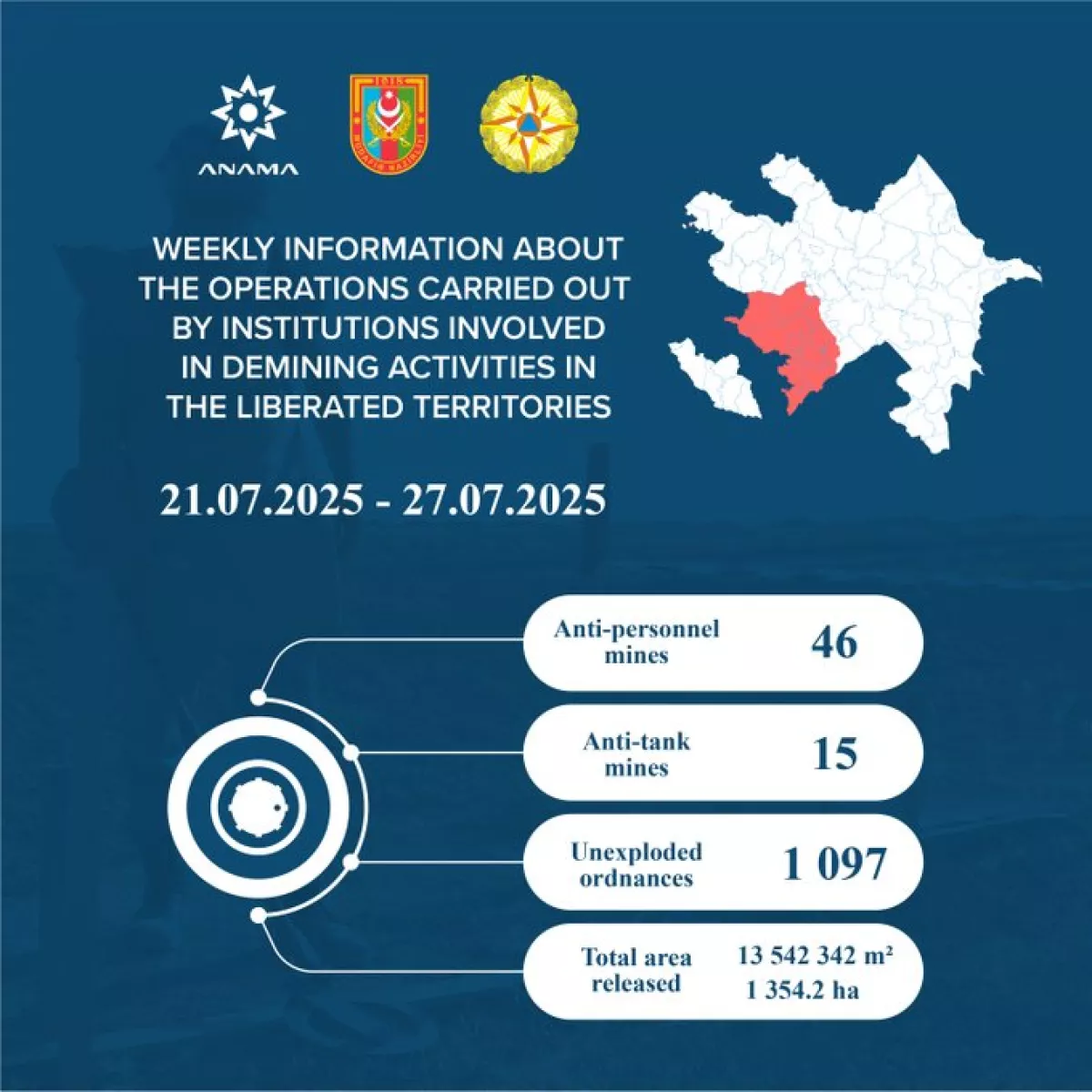Azerbaijan keeps eliminating explosive threats in Karabakh Over 1,100 UXOs neutralised
The Azerbaijan Mine Action Agency (ANAMA) has reported the discovery and neutralisation of 1158 explosive devices during demining operations conducted during July 21-27 across the country’s liberated territories.
According to the agency’s weekly update, the munitions included 46 anti-personnel mines, 15 anti-tank mines, and 1,097 unexploded ordnance (UXOs), posing serious risks to civilians and reconstruction efforts, Caliber.Az reports.

The hazardous items were located across a wide swathe of territory encompassing the districts of Tartar, Aghdara, Kalbajar, Aghdam, Khojaly, Khankendi, Khojavand, Lachin, Shusha, Fuzuli, Gubadli, Jabrayil, and Zangilan.
ANAMA reported that a total of 1,354.2 hectares were cleared during the week, as efforts intensify to ensure the safe return of displaced persons and enable infrastructure development.
Since the end of the Second Karabakh War in 2020, landmines planted by Armenia have killed or injured 399 people, raising the total number of mine-related casualties in Azerbaijan to over 3,400 since the early 1990s — including hundreds of women and children.
Azerbaijan has repeatedly accused Armenia of worsening the crisis by refusing to hand over accurate minefield maps and placing explosives in civilian areas, further deepening the humanitarian toll.
Mine clearance remains a national priority, led by the Azerbaijan National Agency for Mine Action (ANAMA). Around 140,000 hectares have been cleared so far, but large contaminated areas still pose serious threats, blocking the safe return of nearly 800,000 displaced people.
Despite major domestic efforts, including the use of all-women demining teams and substantial state funding, Azerbaijani authorities stress that international support is vital to address the scale of the problem and ensure lasting safety in the region.
By Aghakazim Guliyev








